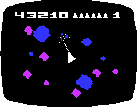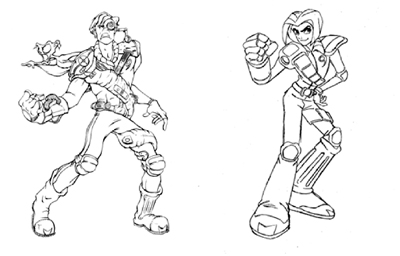When video game developers employ the term “localization” they are referring to a wide range of practices designed to adapt software for specific regional markets. I began this project with the idea that these localization practices could reveal something about the way game developers, publishers, even policymakers or regulatory board members—anyone connected with the decisions or logic of game localization—think about games. More specifically, within the purview of this seminar, how do creators imagine particular aspects of “thingness”, formations of subject and object, or distributions of agency, embodied by their games and game worlds and impressed upon their audiences? My underlying assumption, therefore, is that localization practices are motivated, at least in part, by the way some people perceive the relationships that connect game players with games.
I begin here with a broader discussion of the history of video game localization. The early years of the video game industry were concentrated between Japan and the United States. Games were not so much “localized” for international distribution—in-game text, game manuals, and packaging were translated, usually between English and Japanese text. Most often, these translations were an afterthought prompted by a game’s domestic success. Development teams at the time were relatively small (often a single individual), and even these functional translations could preoccupy a programmer with significant technical hurdles, such as implementing alternate character sets and managing limited cartridge memory. Most of the translations themselves were of reliably poor quality (a programmer with a phrase book).
Of course contemporary software suffers a good measure of poor translation; however, video games from the 1980s and early 1990s have achieved a certain notoriety for an unrivalled quantity of (often memorably) inadequate translation. Perhaps a consequence of technological and financial limitations, and the growing pains of a nascent games industry, translations ranging from the unintentionally comical to the wholly nonsensical became almost commonplace during the period. Some of the best known examples continue to enjoy something of an afterlife in the popular memory of the video game marketplace, and consumers can now buy merchandise driven by this nostalgia, like t-shirts bearing the frequently cited Zero Wing (1989) quote “All your base are belong to us.”


A similar afterlife followed Nintendo’s 1989 title River City Ransom, in which combatants exclaimed (via subtitle) “Barf!” in situations that might ordinarily evoke an “Oof!” or an “Ouch!” A 2004 remake, River City Ransom EX, was updated with new graphics and gameplay mechanics. While the dialogue was also drastically revised, the developers not only kept “Barf!” in the game, but they increased the frequency so that adversaries were even more likely to produce the fan-favorite exclamation than in the 1989 original.
When the audio-recording of in-game dialogue first became technologically and financially feasible, the early convergence of bad translations and low-budget voice-acting may represent the video game’s equivalent of the pinnacle of “B” movie absurdity (see AudioAtrocities.com). Even in the 1980s, however, some game publishers were beginning to invest in quality translation, and many companies now rely on professional translators, storywriters, and editors to improve both technical and creative content for international distribution. Small developers may contract independent localization vendors on a project by project basis, while a few larger publishers are well-recognized for consistent, high quality in-house localization. In addition, games are increasingly featuring professional voice actors, drawing talent from more established institutions including Hollywood cinema and, more often, Japanese anime.
don't play me the fool...
I chose to skip ahead a little (tracing game translation practices from their earliest incarnations to their contemporary form) because translation has traditionally been the centerpiece of video game localization, but practices designed to adapt a game for distribution throughout specific regional markets began to extend beyond linguistic translation very early on. The earliest games were by necessity so graphically abstract that simple alterations to the title or the box art could radically transform any narrative or representational implications.

A triangle shooting circles might be a spaceship destroying asteroids, but it could just as easily be an icing cone decorating cupcakes. As video game technologies developed, and as games became a more established media form, localization practices changed as well. Substituting the title of a contemporary first-person shooter would likely achieve little, for example, in the transmogrification from “generic ill-tempered bad guys” into “delicious yet-to-be-frosted baked goods”.

I would like to make two important points a little more explicit so that my pastry example does not oversimplify some of the changes that video games have undergone over the past three decades. First, only a small portion of contemporary developers employ a photorealist aesthetic in their graphic design. More often, games depict fantastical, highly stylized characters, environments, and animation; whether photorealist, abstract, or cartoony caricature however, the growing level of detail and complexity in game images make even subtle substitutions an increasingly rigorous undertaking. Second, this complexity is not limited to pixel count or processing power. Many games are interweaving the mechanics of gameplay with more and more sophisticated storytelling devices. In an early game like Pac-man, gameplay may function as an end in itself, level clearing and high scores motivate the player, and it does not matter much whether the game depicts Pac-man eating pellets and evading ghosts, or a rodent eluding cats to get some cheese. As many (not all) games become more story-driven—with players motivated by narrative exposition and resolution—the ripple-effect from tiny alterations can undermine the entire experience.
So again, as games changed (and continue to change), so of course did localization practices. I introduced River City Ransom (1989) earlier, for example, and it is interesting to note that the dialogue and narrative from this game’s Japanese version were explicitly rewritten to better appeal to a Western audience (making “Barf!” even more bizarre). Beyond translation, and even the alteration of dialogue and storyline, video games are changed in any number of ways for distribution in different regional markets. Character design, animation style, music, and sound effects might be substituted, levels of difficulty adjusted. For many years, Sony titles released for their Playstation game console utilized the controller’s “x” button as the primary action button in the U.S., and the controller’s “o” button as the primary action button in Japan. And beyond button-mapping, entire gameplay mechanics might be redesigned. Before releasing Dirge of Cerberus (2006) in the U.S., for example, publisher Square Enix made significant alterations to the Japanese version’s core play mechanics, helping to reinforce my earlier suggestion that games are no longer constituted exclusively by their gameplay. A review of the game’s localization describes some of these changes:
Vincent [the game’s protagonist]…now runs noticeably faster—1.2 times faster, to be precise. Also, you won't experience as drastic a slowdown when you've got your weapon drawn in aiming mode…There's a new double-jump move…and you can even perform shooting attacks and melee combos in midair now. Vincent's dive-roll dodge move has been supplanted with a dash move that gets you out of the way just as well but lets you recover into an attack position faster. Finally, the limit-break special-attack move no longer detracts from your magic bar; instead, you'll have to find single-use limit-break items to invoke this special power. [Shoemaker 2006]
To be clear, localization takes many forms depending on the individual goals of the publisher. Many developers still think of localization as an afterthought, or an inconvenience best delegated to the interns. At the same time other members of the industry are thinking much more seriously about the practice and implications of video game localization. Each year, the Game Developers Conference, the largest official trade event for industry professionals, has more panels and presentations devoted to game localization. On the one hand, many developers are encouraging the increasing standardization and efficiency of localization practices, including integrating localization considerations into earlier and earlier stages of development, as evidenced for example by Heather Chandler’s manual “The Game Localization Handbook” (2005). At the same time, some developers are beginning to question the impact of localization decisions on their creative work, or even the motivation behind localization practices in general.
During my original presentation I focused on the specific example of Wild 9’s (1998) localization for distribution in Japan as Wildroid 9 (1999). While the game’s French, Italian, German, and Spanish localizations had already gone smoothly (the original was an English-language version), the Japanese localization was unexpectedly challenging, taking many more months than had originally been anticipated. Much more of the game was altered for the Japanese version, including sound effects, background images, and most notably a drastic redesign of the lead character, Wex, and most of these changes were specifically requested by Sony Computer Entertainment Japan. Japanese archaeologist Koji Mizoguchi (2002) has argued that throughout history Japanese national identity has exhibited a particular connection with and investment in the identification and production of uniquely “Japanese” objects. My presentation drew connections between the details of Mizoguchi’s argument and the experience of localizing Wild 9 for a Japanese release.
While I centered that presentation around the object ethnography of a specific game, I introduced this essay with an emphasis on game localization more generally. In this way my “object” becomes the video game in a broader sense, with particular emphasis on those games intended, by their producers, for international distribution (and subsequently less emphasis on alternate, though equally interesting, trajectories of global circulation—when consumers seek out and import original-language versions of software, for example). By widening the scope of this argument, the Wild 9 presentation can be framed as an example of larger scale trends increasingly visible over the short history of video game localization.

Of course localization practices have changed in response to the increasing technological sophistication and commercial success of video games, as well as to the evolution of the more creative qualities of the medium. And I also recognize that most localization decisions are likely motivated by the desire to improve a product’s international profitability (although Daniel Miller has shown that top-down profit-motives are not the only forces which shape the complex networks of negotiation, investment, and maintenance that typically accompany the emergence of local identity within a global marketplace [Miller 1995]). I understand that these are the primary factors which drive the changing practice of video game localization; however, even an oversimplified profit-motive relies on the assumption that, at the very least, something in your product has the ability to compel or alienate a consumer. For this reason, an examination of localization practices has the potential to contribute to an understanding of the way some people make sense of specific connections between humans and nonhumans.
The first part of this essay traces the history and contemporary state of video game localization; my intention with these examples is to draw out some of the trends which characterize the practice. First, few developers actually “localize” the same way—some integrate localization into the earliest stages of development, others leave it to the end; some allocate localization responsibilities to inexperienced interns, others outsource to independent contractors, and still others maintain their own professional in-house teams—this diversity itself makes those recurring threads all the more revealing. To summarize some of these threads, overall game developers are investing increasing energy in particular aspects of localization. Translations are shifting from functional to more creative, employing larger numbers of more experienced writers and editors. While localization used to refer to text translation, developers are altering more and more assets, with a particular emphasis on animation and character design—manual translations extended to dialogue and storyline translations until eventually entire virtual worlds are re-imagined for different regional markets.
So what can this say about the way creators (and policymakers, etc.) imagine relationships between consumers and video games? To begin, the notion of identification plays an important role. Look back at the Shoemaker block quote above and you can see how fluidly he moves between the first- and third-person when describing changes made to the control mechanics in Dirge of Cerberus. Similarly, members of the games industry have yet to locate an adequate and satisfying vocabulary for a game’s primary playable character (of course not all games have a playable character). In the many game genres suspended somewhere between interactive storytelling and narrative gameplay, for example, neither “protagonist” nor “avatar” are very useful. Recently, developers have been debating whether gameplay designed from a third-person perspective, where the player can see their avatar situated within the game-world, might actually be more immersive for the game player than a first-person perspective. All of these examples help to illustrate the way game designers are struggling to make sense of the relationship between the player and the game. At the same time the emphasis in localization practices placed on character design and the development, in particular, of a market-friendly protagonist, suggests that these images are endowed with a degree of power or agency to act on consumers and the market in unintended ways if they are not properly mediated.
At one point gameplay was capable of circulating between the United States and Japan relatively unmarked. As I mention above, titles, manuals, or arcade cabinets were substituted, but for many years games were shipped between the U.S. and Japan without any alteration to the actual programming. Then came a brief period during which in-game text was translated, but still, gameplay remained unaltered. At some point, however, the very mechanics of a game—what buttons to press, what actions are available to the player—were identified as a mutable attribute amenable to modification for different regional markets. Here gameplay itself is invested with a form of political agency as developers imagine notions of social identity affiliated with button-mapping or double-jumps.
Altogether then, regardless of whether specific practices reflect the desire to increase profits in a regional market or to satisfy a regulatory board ruling against the depiction of Christian religious figures, the very notion that we need to change the content of games distributes a form of agency through video games. At the same time games are allocated additional power articulated by the fear that, if distributed in the “wrong” form games might impact consumers in ways that were unintended or threatening. In these ways, video game localization explicitly identifies and attends to the expectation that objects change through their encounter with (or embodiment by) different subjects, and therefore that objects and subjects are necessarily mutually constitutive. And of course any exercise like this opens up additional questions. For example, what is the role of the nation-state, so invested in the negotiations of national identity, when localization practices are motivated largely by national regulatory boards (such as the ESRB in the U.S. who regulate entertainment software similar to the way the MPAA regulates mainstream cinema)? Or what are the implications of the increasingly common avatar-based interfaces in which users navigate through customizable characters, but in the absence of any semblance to traditional gameplay—inciting the games industry to label these products “non-games” or “meta-games”?
references
Chandler, Heather. 2005. The Game Localization Handbook.
Hoskins, Janet. 2006. Agency, Biography, and Objects. In Handbook of Material Culture. Christopher Tilley, Webb Keane, Susanne Kuchler, Mike Rowlands, and Patricia Spyer, eds. Pp. 74 - 84, Sage:London.
Ingold, Tim. 2000. The Perception of the Environment: Essays in Livelihood, Dwelling and Skill. Routledge, London.
Koji Mizoguchi. 2002. An Archaeological History of Japan: 30,000 B.C. to A.D. 700. Philadelphia: University of Pennsylvania.
Miller, Daniel, ed. 1995. Worlds Apart. London: Routledge.
Shoemaker, Brad. 2006. E3 06: Dirge of Cerberus Localization Update. Electronic document. <http://www.gamespot.com/ps2/action/dirgeofcerberusfinalfantasyvii/news.html> Posted May 11, 2006.
Stewart, Susan. 1993. Objects of Desire. In On Longing: Narratives of the Miniature, the Gigantic, the Souvenir, the collection. Pp. 132 – 170. Durham: Duke University Press.
Tilley, Christopher. 2006. “Objectification”. In Handbook of Material Culture. Christopher Tilley, Webb Keane, Susanne Kuchler, Mike Rowlands, and Patricia Spyer, eds. Pp. 60 – 73, Sage:London.